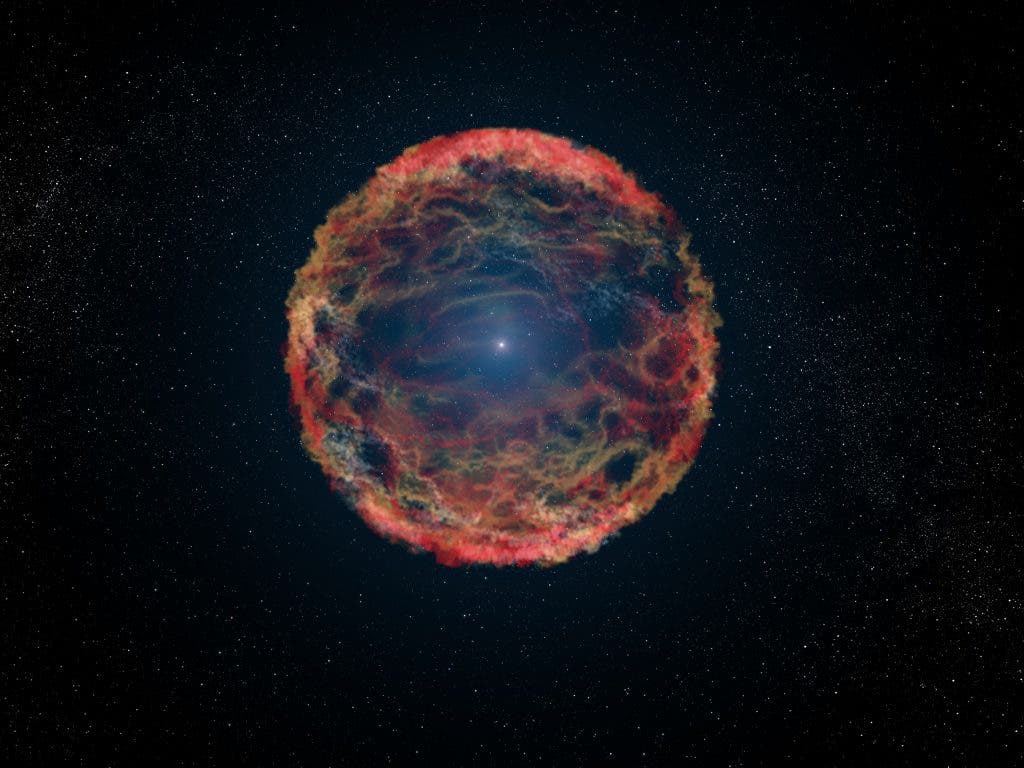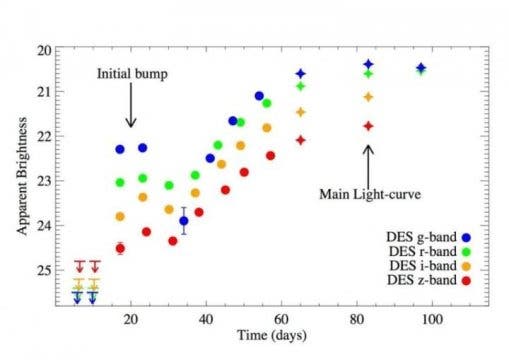
When a star is ready to drop the curtain, it goes out with a bang — a supernova explosion. Sometimes, however, some stars blow up twice. Now, astronomers studying these rare and mysterious cosmic events say they’ve uncovered a link between these double explosions and another class of novas called superluminous supernovas.
Supernovae are basically stellar eruptions, triggered either by the gravitational collapse of a massive star, or by the sudden re-ignition of nuclear fusion in a degenerate star. They are amazing manifestations of energy – for brief moments, a supernova can outshine an entire galaxy, radiating as much energy as the Sun or any ordinary star is expected to emit over its entire lifespan, before fading after a few weeks or months. A typical supernova will also eject enough material to seed 7,000 Earths. The shock breakout immediately precedes the ‘big event’ and is essentially a massive flash of brightness.
Maybe the rarest class of supernovas, however, are the superluminous kind. These are up to 100 times brighter than the regular variety. They’re also very rare. Only 0.1% of supernovas are superluminous and only 30 have been caught by astronomers so far.
These mysterious cosmic bodies are the focus of research nowadays as astronomers try to piece the puzzle of their origin. We still don’t know a lot about them, but previous work seems to suggest superluminous supernovas blow up twice, something that British researchers seem to confirm in this new study.
Using the Gran Telescopio Canarias, a telescope in Spain’s Canary Islands, astronomers spotted one of this rare gems in 2014. The superluminous supernova called DES14X3taz is located 6.4 billion light-years from Earth. The scientists were lucky enough to catch the explosion as it unfolded, and tracked its temperature for months. What they found was that after an initial spike of brightness, the supernova cooled off, only to turn the lights on much brighter some time later.

This initial spike of the dying star which had a mass 200 times greater than the sun was likely due to the ejection of a huge bubble of material. As this bubble grew to tremendous size, the material rapidly cooled. What was most remarkable, however, was that following the initial spike of brightness the star gave birth to a magnetar.
Though it sounds like a magnetic centaur, a magnetar is, in fact, a type of neutron star — the collapsed core of the star following the nova event. Magnetars are among the most powerful magnets in the Universe. In this particular case, the creation of the magnetar triggered the second, much more powerful supernova event because it heated the bubble of matter initially expelled into outer space.
Mathew Smith, an astrophysicist at the University of Southampton in England, one of the lead authors of the study, peered through existing literature and databases and found this sort of double-peak events are very common among superluminous supernovas. The two may be intrinsically connected, the researchers conclude.
“What we have managed to observe, which is completely new” said Smith, “is that before the major explosion there is a shorter, less luminous outburst, which we can pick out because it is followed by a dip in the light curve, and which lasts just a few days.”
“The hunt is now on to find these events early and really tie down what causes them,” Smith said. “Fingers crossed we find some more.”






